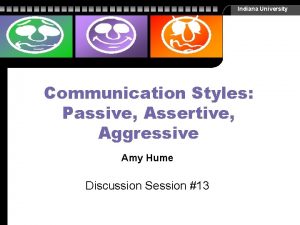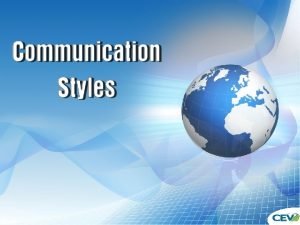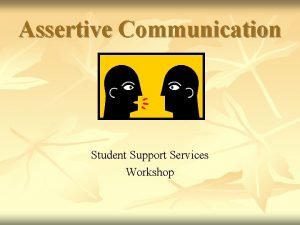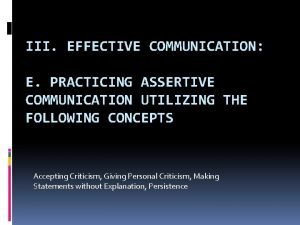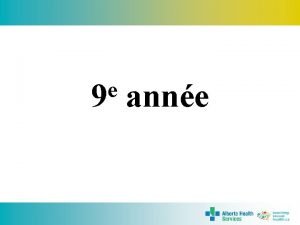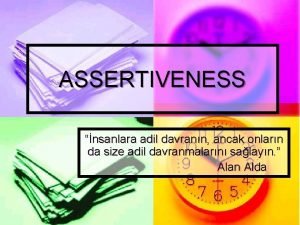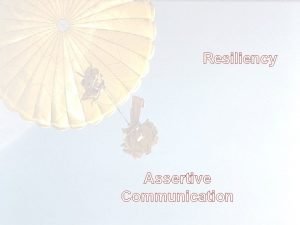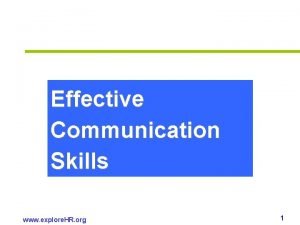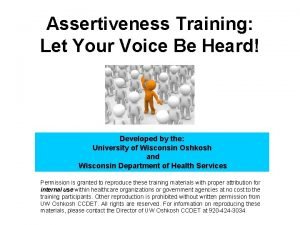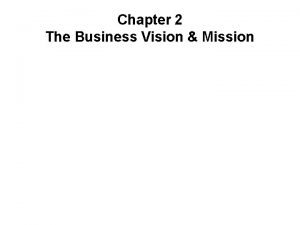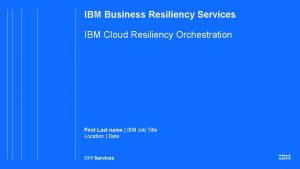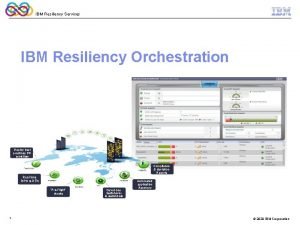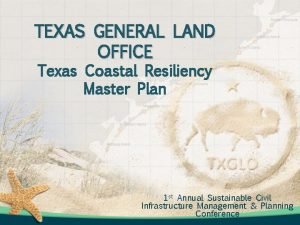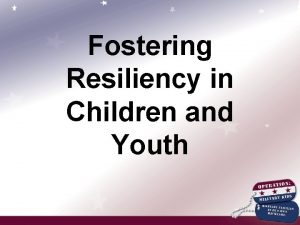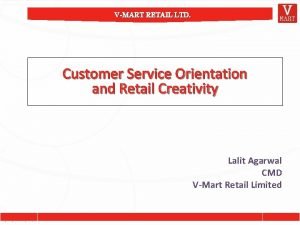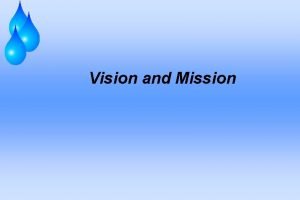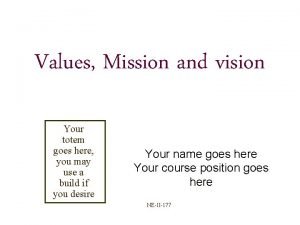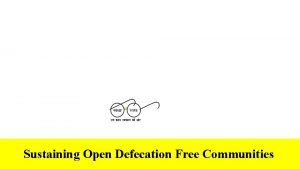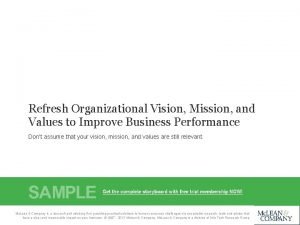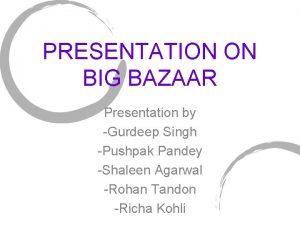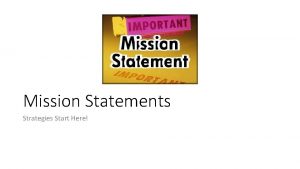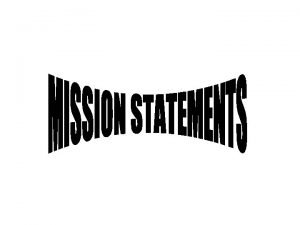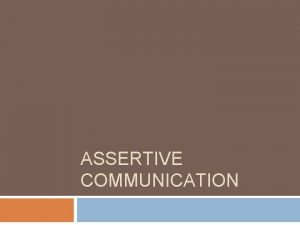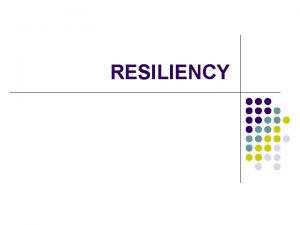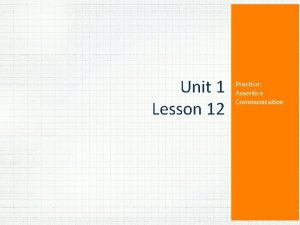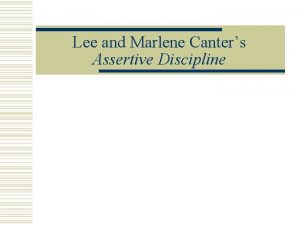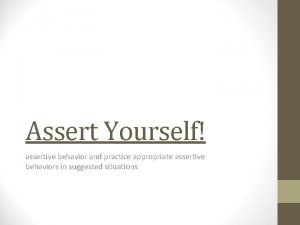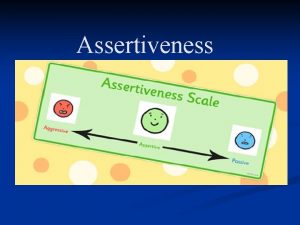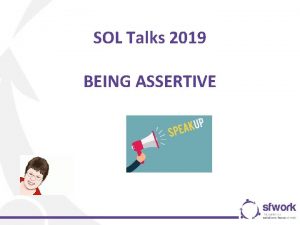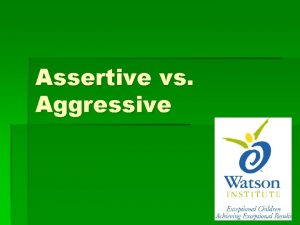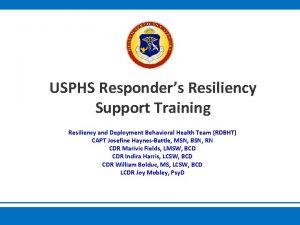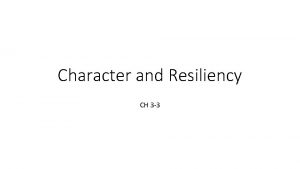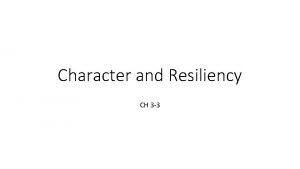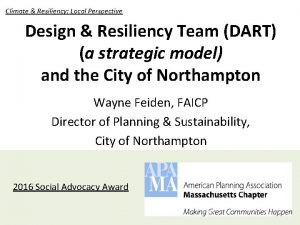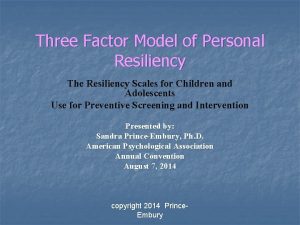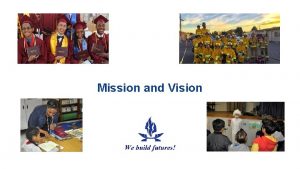Resiliency Assertive Communication 2 Mission and Vision Mission


































- Slides: 34

Resiliency Assertive Communication 2

Mission and Vision Mission: Implements the Comprehensive Soldier Fitness Program, identifies and trains Master Resiliency Trainers (MRTs) and commences annual resiliency sustainment training in order to enhance overall performance, improve unit level readiness, and sustain a balanced, healthy, campaign capable, expeditionary army End state: Will improve unit readiness and performance by implementing the Resiliency Training program. The end state will see a more balanced, healthy and capable Brigade Combat Team POC: ASC MRT, DSN 793 -4847 2

Task, Conditions, Standards Task: Learn to communicate clearly and with respect. Use the IDEAL model to communicate in a Confident, Clear, and Controlled manner. Conditions: Within a classroom environment and 90 minute timeframe. Standards: Understand that Connection is a primary target of Assertive Communication POC: ASC MRT, DSN 793 -4847 3

Assertive Communication POC: ASC MRT, DSN 793 -4847 4

Key Principles Takes practice: Assertive Communication takes practice. Flexibility: Match your style of communication to the situation/person you are communicating with. Skill, not personality: Communication styles are skills, not personality styles. Retreat, refuel, return: Take a break from the conversation. Relax/rethink and then try again. Connection: Assertive Communication builds all of the MRT competencies; Connection is a primary target. POC: ASC MRT, DSN 793 -4847 5

Bottom Line Up Front Assertive Communication helps to build Connection. Assertive Communication helps you solve problems by remaining Confident, Clear, and Controlled. POC: ASC MRT, DSN 793 -4847 6

Assertive Communication: Applications When is Assertive Communication appropriate or not appropriate in the Army? What gets in the way of Assertive Communication? How will your relationships benefit through the use of Assertive Communication? POC: ASC MRT, DSN 793 -4847 7

Communication Skill Set Assertive Communication: Communicate clearly and with respect. Active Constructive Responding: Respond to others to build strong relationships. Praise: Praise to build mastery and winning streaks. POC: ASC MRT, DSN 793 -4847 8

Communication Styles In small groups, discuss what makes communication effective. POC: ASC MRT, DSN 793 -4847 9

Communication Styles Complete the chart on the Communication Styles worksheet. What are the descriptors of each style? What are Icebergs that contribute to each style? What are the messages that each style sends to the other person? POC: ASC MRT, DSN 793 -4847 10

Debrief What did you learn? What are the descriptors of each style? What are Icebergs that contribute to each style? What are the messages that each style sends to the other person? POC: ASC MRT, DSN 793 -4847 11

Aggressive Communication Must have the last word Talking over the other person Out of control emotion Blaming Talking down POC: ASC MRT, DSN 793 -4847 12

Icebergs beneath Aggressive Communication The best defense is a strong offense. You’ve got to be loud and strong if you want to win. Never back down from a fight. Any sign of weakness and you’ll be taken advantage of. I want it and deserve it now! POC: ASC MRT, DSN 793 -4847 13

Passive Communication Quiet No eye contact Withdrawn Sulking Submissive Fearful Appeasing POC: ASC MRT, DSN 793 -4847 14

Icebergs beneath Passive Communication It’s wrong to complain. I don’t really care. It doesn’t matter. I’ll make enemies if I speak my mind. No one ever really changes anyway. It’s more important that people like me, than to be right. I don’t like conflict. POC: ASC MRT, DSN 793 -4847 15

Assertive Communication (3 Cs) Confident, Clear, Controlled Seek to understand Important in dealing with family and colleagues (communication that works in combat or, with your Platoon doesn't work at home) POC: ASC MRT, DSN 793 -4847 16

3 Cs: Confident, Clear, and Controlled Confident: You believe in your ability to handle the situation and are composed. Clear: The message is easy to understand is not exaggerated. Controlled: You are “tracking” the other person and modulate yourself if necessary. POC: ASC MRT, DSN 793 -4847 17

Icebergs that Hinder the 3 Cs I’m not that strong. I’m not a good Soldier. I don’t measure up. POC: ASC MRT, DSN 793 -4847 18

Icebergs that Promote the 3 Cs We can work this out. I trust you and respect you. I can express myself clearly and confidently. What I believe matters. POC: ASC MRT, DSN 793 -4847 19

The IDEAL Model I = Identify and understand the problem. D = Describe the problem objectively and accurately. E = Express your concerns and how you feel (when appropriate). A = Ask the other person for his/her perspective and then ask for a reasonable change. L = List the outcomes. POC: ASC MRT, DSN 793 -4847 20

Tips for IDEAL I = Identify and understand the problem ATC and check for Thinking Traps Detect Icebergs (if necessary) Put It In Perspective (if necessary) POC: ASC MRT, DSN 793 -4847 21

Tips for IDEAL Once you’ve identified the problem, then you can move to communication. D = Describe the problem objectively and accurately Who, what, when, where Specific, recent Minimize exaggeration E = Express your concerns and how you feel (when appropriate) “I” rather than “you” Minimize exaggeration POC: ASC MRT, DSN 793 -4847 22

Tips for IDEAL A = Ask the other person for his/her perspective… What and How questions, not Why questions Repeat back what you heard to check that you’re hearing him/her accurately …and then ask for a reasonable change “Good Faith” test (reasonable, doable) Work towards a win-win POC: ASC MRT, DSN 793 -4847 23

Tips for IDEAL L = List the outcomes Positive rather than negative Consider appropriateness POC: ASC MRT, DSN 793 -4847 24

Assertive Communication Practice Activities: In Scenarios 1 and 2, practice Assertive Communication with your group. Person 1 initiates Assertive Communication. Person 2 responds within role-play. In Scenario 3, practice Assertive Communication with a partner. In Scenario 4, practice the IDEAL model on a situation of your own. POC: ASC MRT, DSN 793 -4847 25

Communication Scenario 1 Participants Role-play in Group: One of your fellow Soldiers keeps using your i. Pod without your permission and running down the battery. POC: ASC MRT, DSN 793 -4847 26

Communication Scenario 2 Participants Role-play in Group: Your spouse/significant other is spending too much money on things you don’t consider essential. POC: ASC MRT, DSN 793 -4847 27

Communication Scenario 3 Participants Role-play in Pairs: In pairs, practice Assertive Communication in the following scenario (Person 1 initiates Assertive Communication and Person 2 responds): Your battle buddy has started drinking alcohol more than usual and has been several times drinking and driving. POC: ASC MRT, DSN 793 -4847 28

Communication Scenario 4 Choose a scenario from your own life. Use the IDEAL model to develop your Assertive Communication plan. POC: ASC MRT, DSN 793 -4847 29

Debrief What did you learn from this activity? What if you use Assertive Communication and still don’t get what you want? What if you use Assertive Communication and the other person doesn’t react positively? POC: ASC MRT, DSN 793 -4847 30

Assertive Communication: Applications When is Assertive Communication appropriate or not appropriate in the Army? What gets in the way of Assertive Communication? How will your relationships benefit through the use of Assertive Communication? POC: ASC MRT, DSN 793 -4847 31

Check on Learning What is the skill? Assertive Communication is a method of communication that is Confident, Clear, and Controlled. When do I use it? Use Assertive Communication when confronting someone about a conflict or challenge (and is the most appropriate style in that situation). How do I use it? Use the IDEAL model: I = Identify and understand the problem, D = Describe the problem objectively and accurately, E = Express your concerns and how you feel (when appropriate), A = Ask the other person for his/her perspective and ask for a reasonable change, L = List the outcomes. POC: ASC MRT, DSN 793 -4847 32

Resiliency Questions 2

AAR What went well 1. 2. 3. What can be improved 1. 2. 3. As of 25 Oct 10 POC: ASC MRT, DSN 793 -4847 34
 Aggressive passive assertive communication
Aggressive passive assertive communication Example of assertive communication
Example of assertive communication Example of assertive communication
Example of assertive communication Assertive communication ppt
Assertive communication ppt Assertive communication quiz
Assertive communication quiz Une communication assertive
Une communication assertive Assertive nonverbal communication
Assertive nonverbal communication Active constructive responding
Active constructive responding Assertive communication
Assertive communication Assertive cartoon
Assertive cartoon Assertiveness discussion questions
Assertiveness discussion questions Ibm business continuity services
Ibm business continuity services Herbalife mission and vision
Herbalife mission and vision Ibm cloud orchestration
Ibm cloud orchestration Ibm resiliency orchestrator
Ibm resiliency orchestrator Aix smit
Aix smit Ibm geographically dispersed resiliency for power systems
Ibm geographically dispersed resiliency for power systems Sgip equity resiliency program
Sgip equity resiliency program Texas glo gis
Texas glo gis Protective factors definition
Protective factors definition Calactite
Calactite Resiliency
Resiliency Lenovo mission statement and vision
Lenovo mission statement and vision Wooqer vmart
Wooqer vmart Ibm vision statement
Ibm vision statement Wood badge vision statement examples
Wood badge vision statement examples Mission and vision of cleanliness
Mission and vision of cleanliness Vision mission and values
Vision mission and values Mission and vission of pccb
Mission and vission of pccb Vision and mission of big bazaar
Vision and mission of big bazaar Tesla vision and mission
Tesla vision and mission City of harare vision and mission
City of harare vision and mission Mc donalds vision
Mc donalds vision Description for cupcakes
Description for cupcakes Vision and mission of itc company
Vision and mission of itc company
